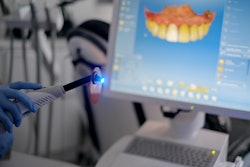This week, Dr. Meena Barsoum returns with another clinical tip that is sure to help your dental practice grow. This time, Dr. Barsoum is focusing on the CAD/CAM side of your practice, especially the CEREC Primemill.
You can watch the video below, as well as read the transcript, for Barsoum's tips. Additionally, learn more about CDOCS' memberships and CDOCS' hands-on workshops.
Video transcript
"Today, I'd like to focus on milling strategies. We're going to talk about fast versus fine versus even super fast and even extra fine.
"So let's talk about the different options we have with our milling machines. So when we look at our mills, we have two different ways of creating a restoration. One technique is called grinding. That's when we use diamonds to remove material off of glass ceramics like e.max and Celtra Duo. So with grinding, we have fast, fine, and extra fine modes. The fast mode is going to be something that saves you about four minutes or so per milling process. And what it does is it takes away about 50 μm per swipe during each time it passes through the restoration. You do have an increase of chipping potentially on these restorations. So you want to use this only when you have a nice thick finish line and a thick margin.
"With the fine milling, it will take, like I said, about 15 minutes or so, so about four minutes more than the fast mode. It is easier on your instruments and you will have less likelihood of chipping. This becomes our recommended strategy for glass ceramics as that four minutes is not a significant time savings when it comes to the risk of chipping on that.
"Now there is a mode called extra-fine milling and that's when you have a four-motor milling machine. You'll put in extra-fine instruments. So essentially, the machine is going to mill the restoration twice. It will take the majority of the ceramic away during the first pass, and then it'll go through with the very fine instruments and remill it. So this process takes about twice as long to create the restoration, but it gives you a very, very nice anatomy and a nice fitting restoration. So we recommend this when you're doing something indirectly, let's say a big anterior case over two visits.
"When it comes to zirconia, specifically with the Primemill, the Primemill has some new instrument patterns and paths that we can use and different tool sets. So when we go into our software on the Primemill, we can choose between different milling instruments.
"So we have zirconia with grinding. We have milling zirconia extra fine, which gives you a really nice finish. We have extra-fast milling of zirconia as well. So depending on your indication, you'll insert the proper instruments and that will allow you to mill your restorations. And in the software, you'll see very similar choices to make with the prime mill. So we have here the super-fast milling option that you see. So it'll take away a lot more material a lot faster using bigger instruments. And then you also have the fine milling option as well if you want to mill traditionally. Typically for me with zirconia, I'm super fast milling all my restorations and they're coming out in about four to five minutes in the prime milk."



















